
cd_nom

| Author : J. Touroult |
 |
To get the picture, please visit:
Julien Touroult
UMS PatriNat (AFB - CNRS - MNHN)
Muséum national d'Histoire naturelle, CP41, 36 rue Geoffroy Saint-Hilaire, 75005 Paris
Despite the Creative Commons license, please inform the author of the use which will be made of his photo
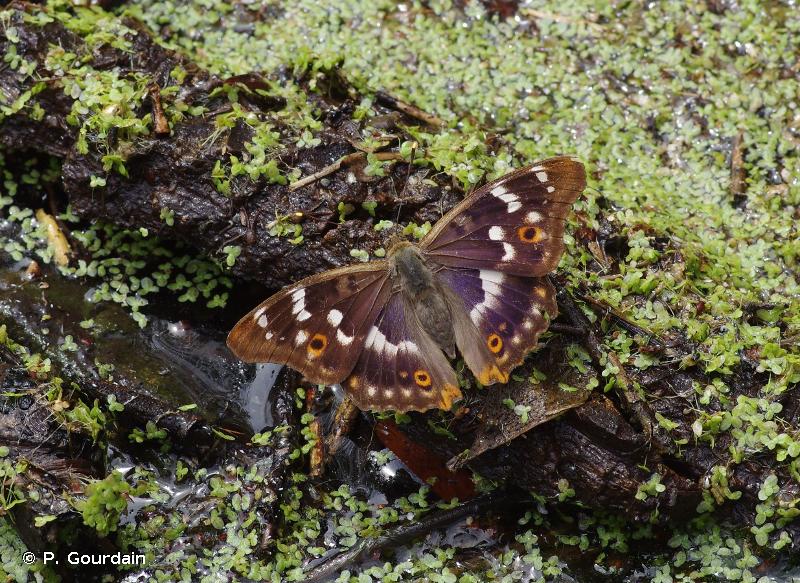
| Author : P. Gourdain |
 |
To get the picture, please visit:
Philippe GOURDAIN
Muséum national d'Histoire naturelle - Service du Patrimoine Naturel
36 rue Geoffroy Saint-Hilaire
75 231 PARIS CEDEX 05
email : inpn@mnhn.fr
Despite the Creative Commons license, please inform the author of the use which will be made of his photo
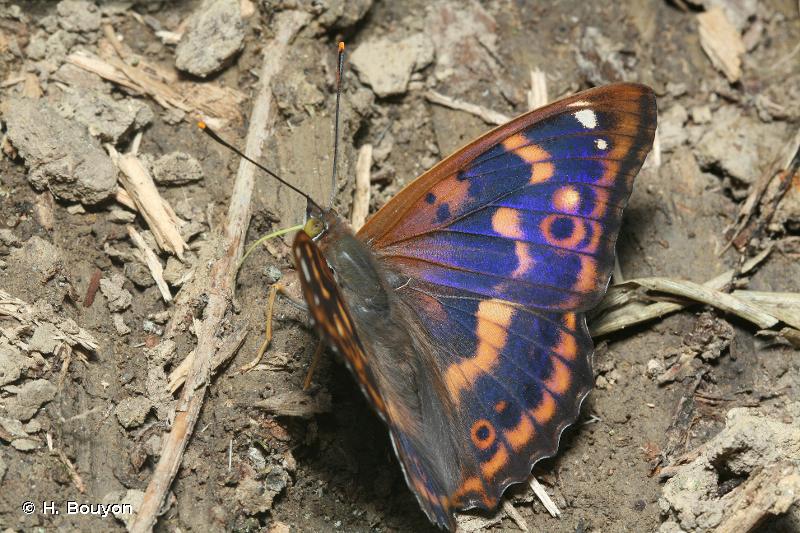
| Author : H. Bouyon |
 |
To get the picture, please visit:
Hervé BOUYON
email : herve.bouyon@wanadoo.fr
Any reuse of one or more photographs on this site is subject to an authorization request from the author.
Link to the Code of Intellectual Property (Legifrance)
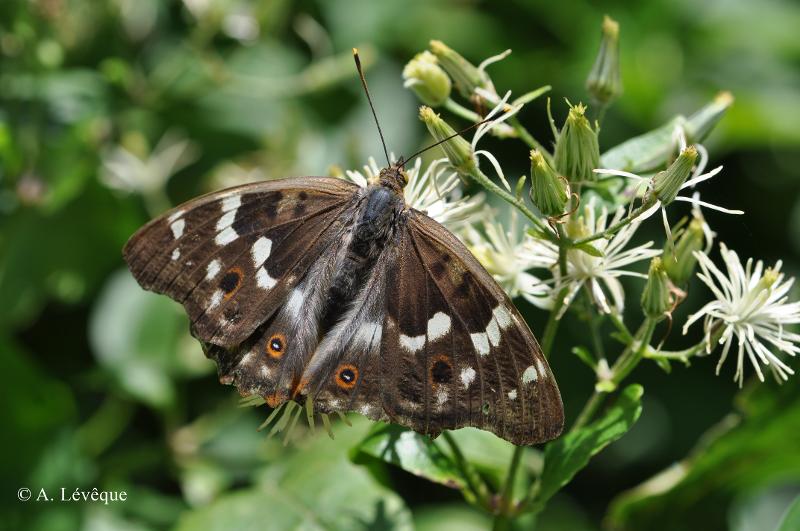
| Author : A. Lévêque |
 |
To get the picture, please visit:
Antoine Lévêque
E-mail : antoine.leveque@mnhn.fr
Despite the Creative Commons license, please inform the author of the use which will be made of his photo

| Author : J.M. Mourey |
 |
To get the picture, please visit:
Jean-Michel MOUREY
Office National des Forêts - Direction de l'Environnement et des Risques Naturels
2 avenue de Saint-Mandé
75 012 PARIS
e-mail : jean-michel.mourey@onf.fr
Legend: Plan d'Anelle
Any reuse of one or more photographs on this site is subject to an authorization request from the author.
Link to the Code of Intellectual Property (Legifrance)
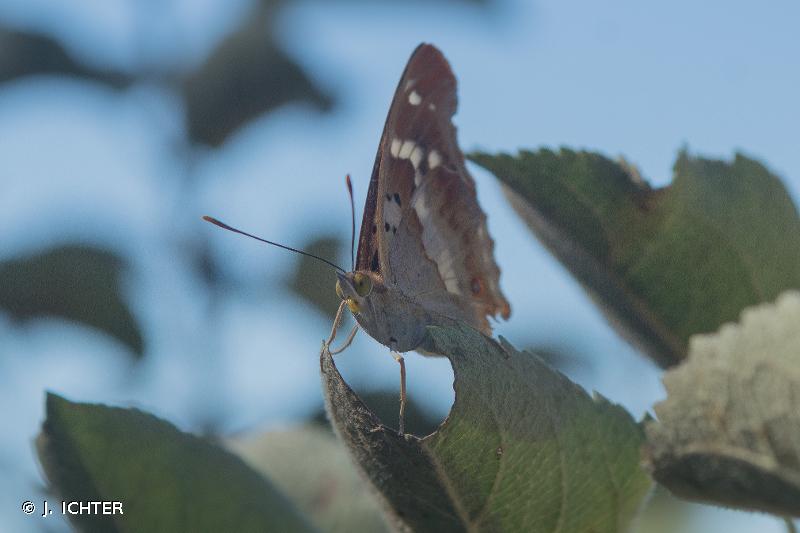
| Author : J. ICHTER |
 |
To get the picture, please visit:
inpn@mnhn.fr
Despite the Creative Commons license, please inform the author of the use which will be made of his photo

| Author : S. Wroza |
 |
Despite the Creative Commons license, please inform the author of the use which will be made of his photo
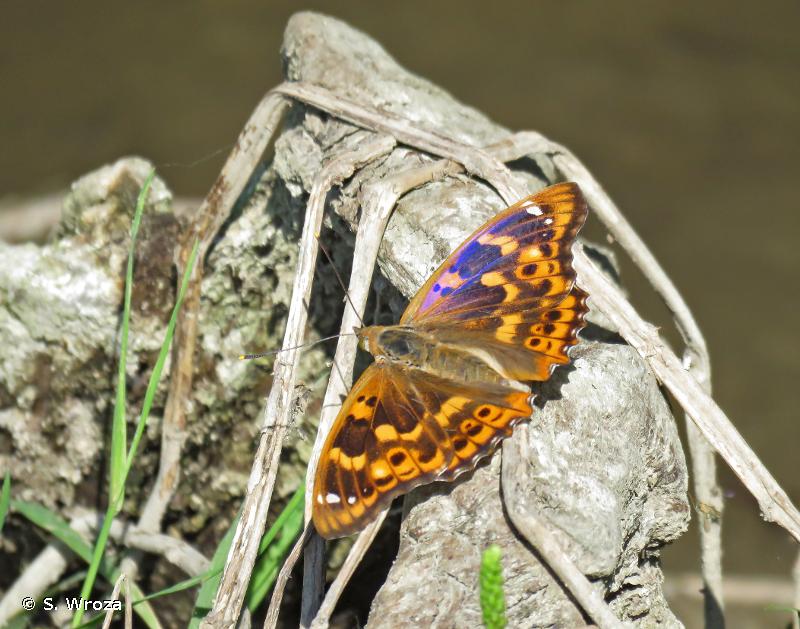
| Author : S. Wroza |
 |
Despite the Creative Commons license, please inform the author of the use which will be made of his photo

| Author : S. Wroza |
 |
Despite the Creative Commons license, please inform the author of the use which will be made of his photo
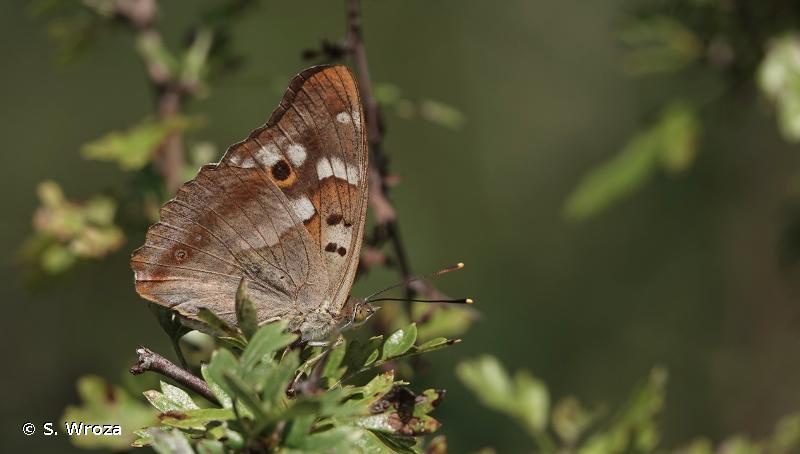
| Author : S. Wroza |
 |
Despite the Creative Commons license, please inform the author of the use which will be made of his photo
Taille :
Adulte : 66 - 72 mm
Diagnose :
Grand papillon au dessus brun foncé à noir reconnaissable aux reflets métalliques bleu-violet du mâle. L'intensité des reflets varie fortement selon l'angle d'observation. Il existe une forme avec des taches blanches sur le dessus (nommée ilia) et une forme avec des taches oranges. Sur le dessus de l'aile antérieure, la présence d'un ocelle noir est caractéristique. La chenille est de couleur verte et porte des cornes incisées à l'extrémité.
Détermination :
L'adulte est relativement simple à reconnaître.
Espèces proches :
Confusion possible avec le Grand Mars changeant dont il se distingue par la présence d'un ocelle noir sur le dessus de l'aile antérieure.
Période d'observation :
L'adulte est visible de mi-avril à octobre.
Biologie-éthologie :
Le Petit Mars changeant réalise un à deux cycles par an. La femelle pond ses œufs un par un sur le dessus des feuilles des Peupliers et des Saules (plus rarement des Aulnes) en privilégiant les jeunes arbres. Les adultes apprécient particulièrement le miellat des pucerons et le jus des fruits bien mûrs.
Biogéographie et écologie :
Le Petit Mars changeant est présent de l'Europe de l'ouest jusqu'en Asie. On le trouve de préférence dans les habitats du Peuplier tremble, du Peuplier noir et des Saules. Il est plus abondant en dessous de 800 m d'altitude mais peut être observé jusqu'à 1°500 m.
D'après
Doux Y., Gibeaux C., 2007. Les papillons de jour d'Île-de-France et de l'Oise. Biotope, Mèze. Muséum national d'Histoire naturelle, Paris. 288 p.
Lafranchis, T., Jutzeler, D., Guilloson, J.-Y., Kan, P., Kan, B. 2015. La vie des papillons. Editions Diatheo. Montpellier. 751 pp.
Lafranchis, T. 2016. Papillons de France. Editions Diatheo. Montpellier. 351 pp.
J. Ichter(),2019
Continental
Metropolitan France
Overseas
Marine
Metropolitan France
Overseas
The map presents a summary at the 10 x 10 km grid of the observation data for the species transmitted to the SINP. These data have been subjected to validation filters.
The map presents a reference distribution layer of the species at the scale of departments and marine sectors. The presence and absence data were established by expertise within a network of partners. This reference distribution is used in the validation process of the SINP data at the INPN level.
Corresponds to a report on the basis of at least one observation proved within a period of 10 years (20 years for little-known invertebrates) preceding the year and no presumption of extinction since obtaining the last data nor doubt on reproductive and implemented nature of this population. For migratory species, the presence indicated concerns areas of reproduction.
This status is based on one or more of the following criteria:
This point covers the absence, more difficult by nature to demonstrate than presence. This status is based on one or more of the following criteria:
This status must be assigned to a department in which the presence of the species is casual.
Particular case of absence due to a proven extinction less than a half century ago (older disappearances are treated as "no probable or definite").
In the state of knowledge, we can not comment on the presence or absence in the current department. This is the default status when not comprised in one of the previous categories or whenever there is doubt.
The map shows the global distribution of the species based on GBIF data (Global Biodiversity Information Facility).
